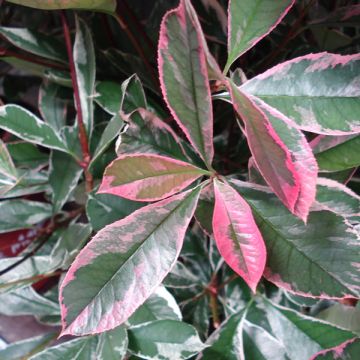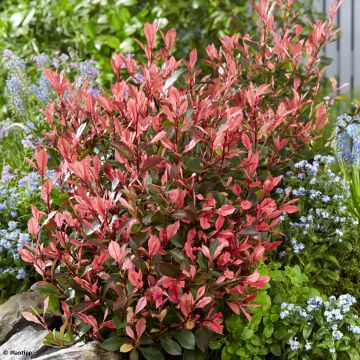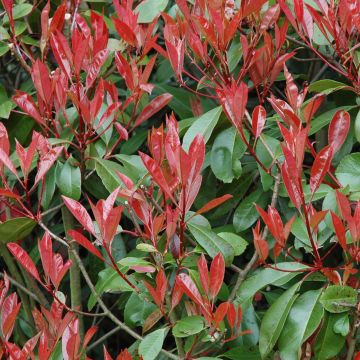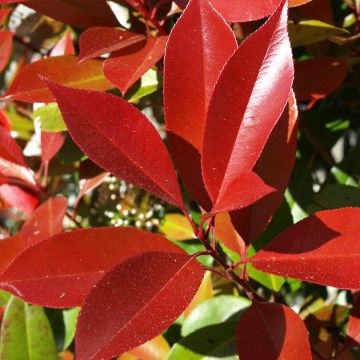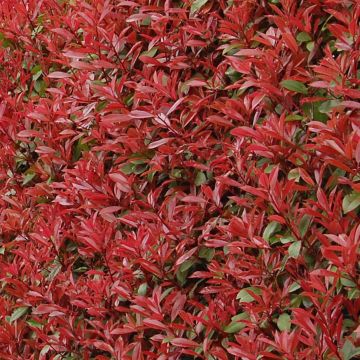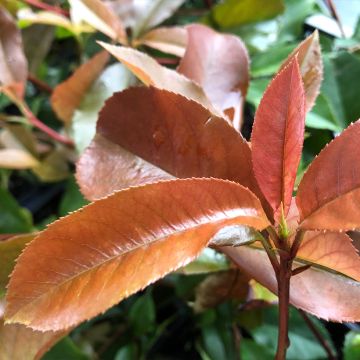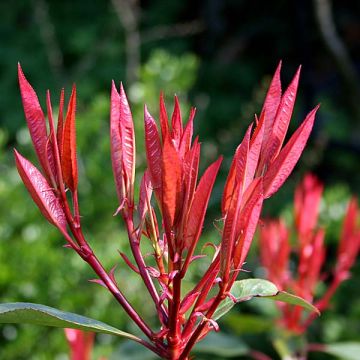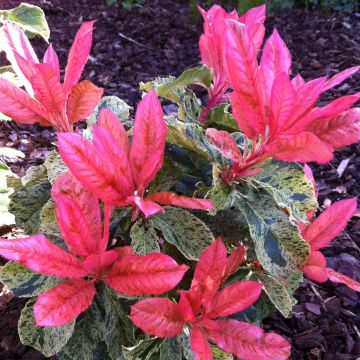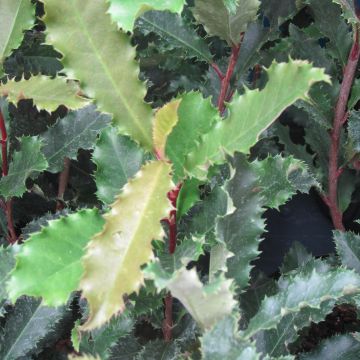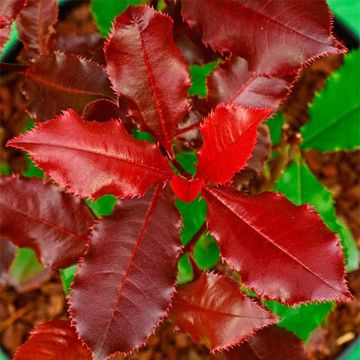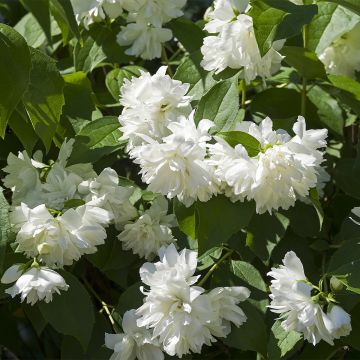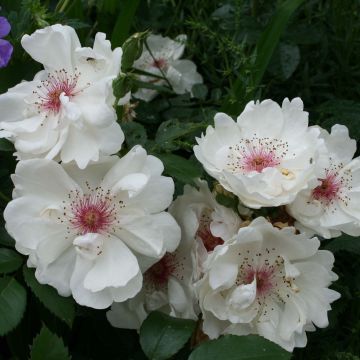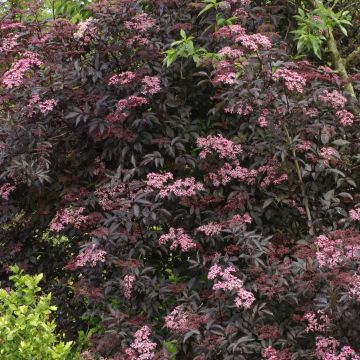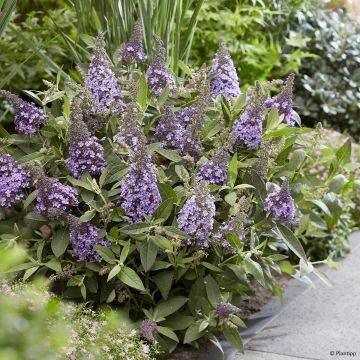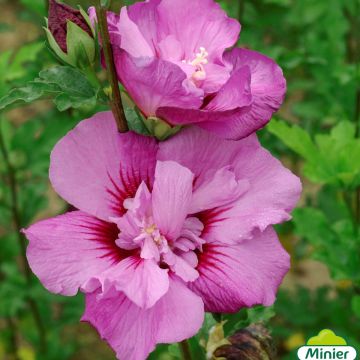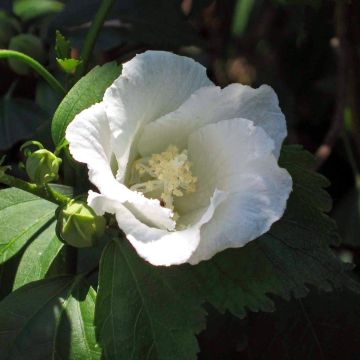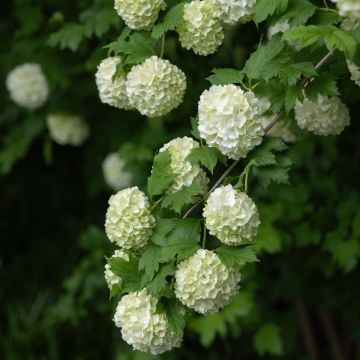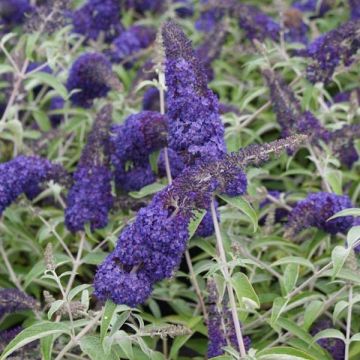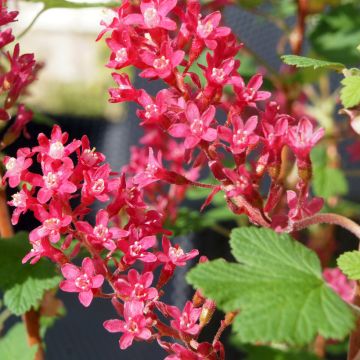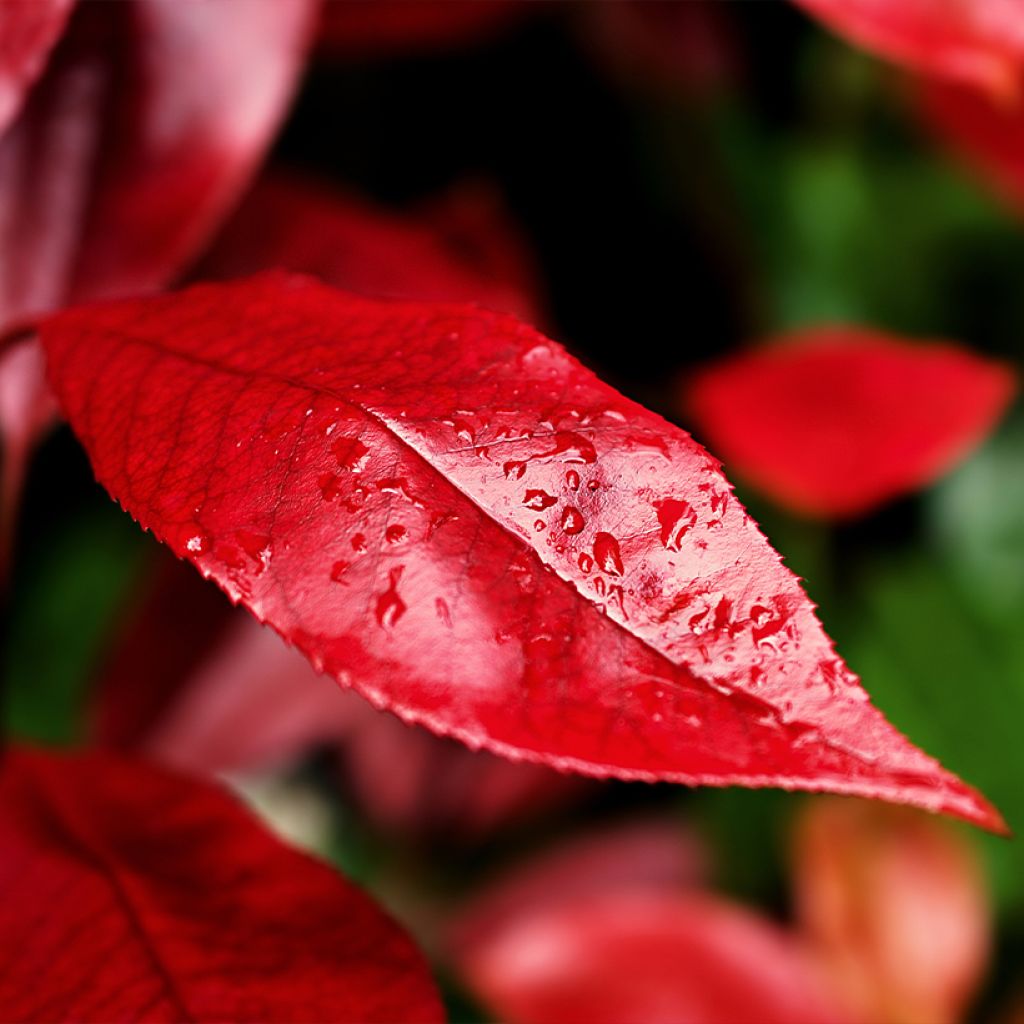

Photinia fraseri Nana - Christmas Berry
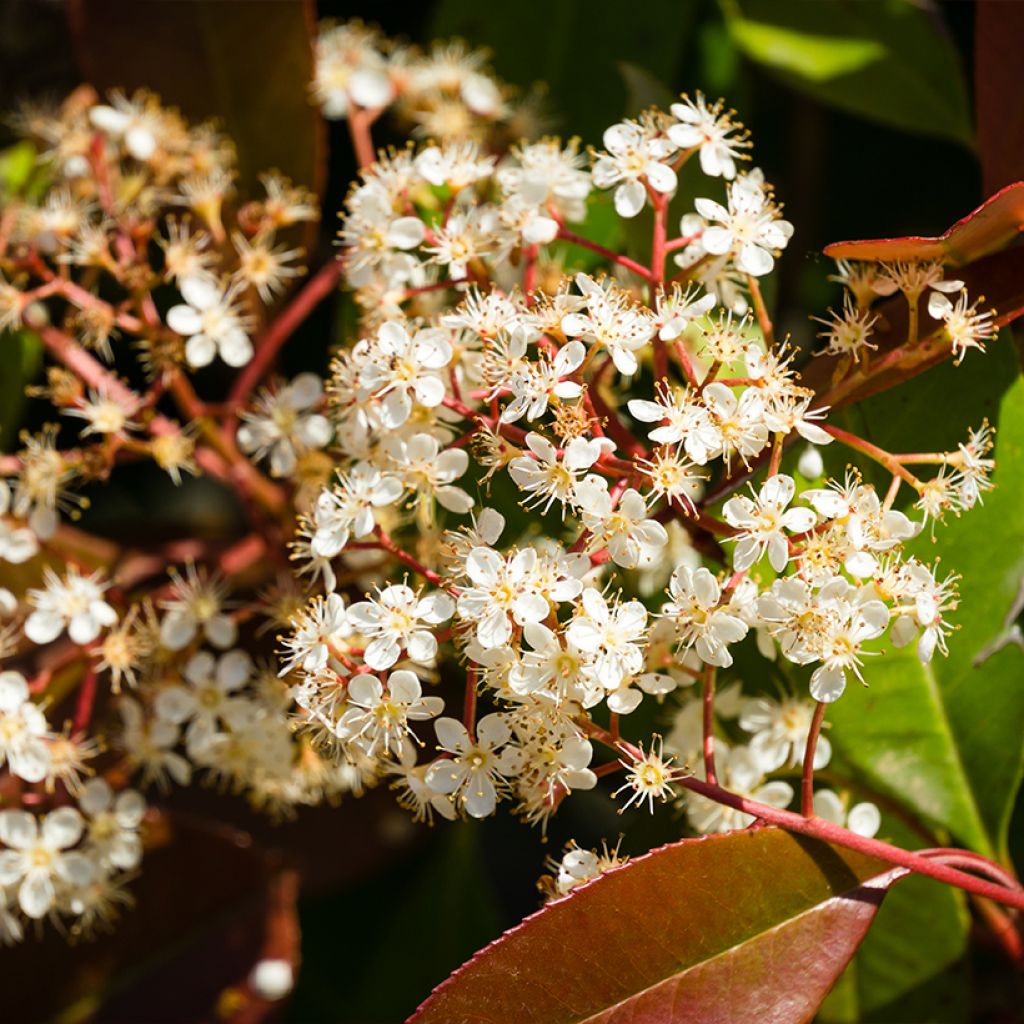

Photinia fraseri Nana - Christmas Berry
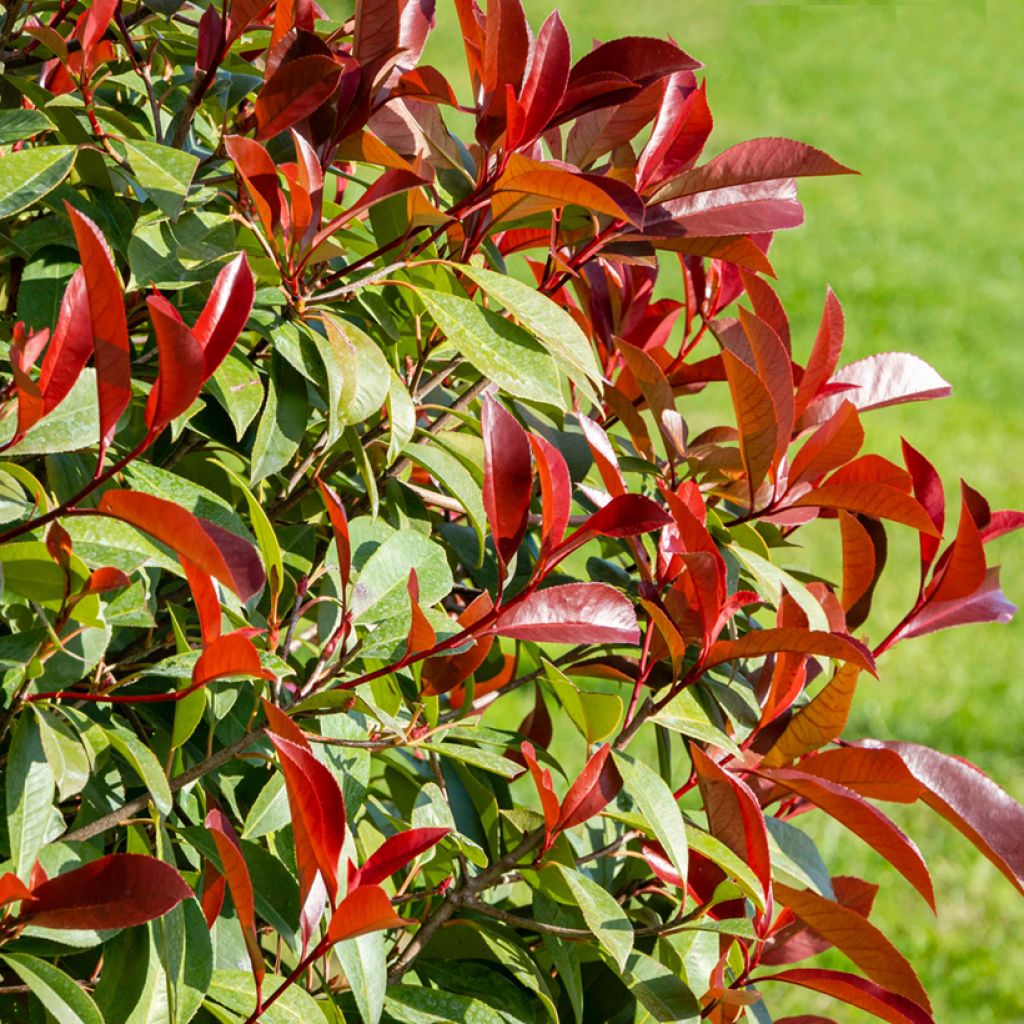

Photinia fraseri Nana - Christmas Berry
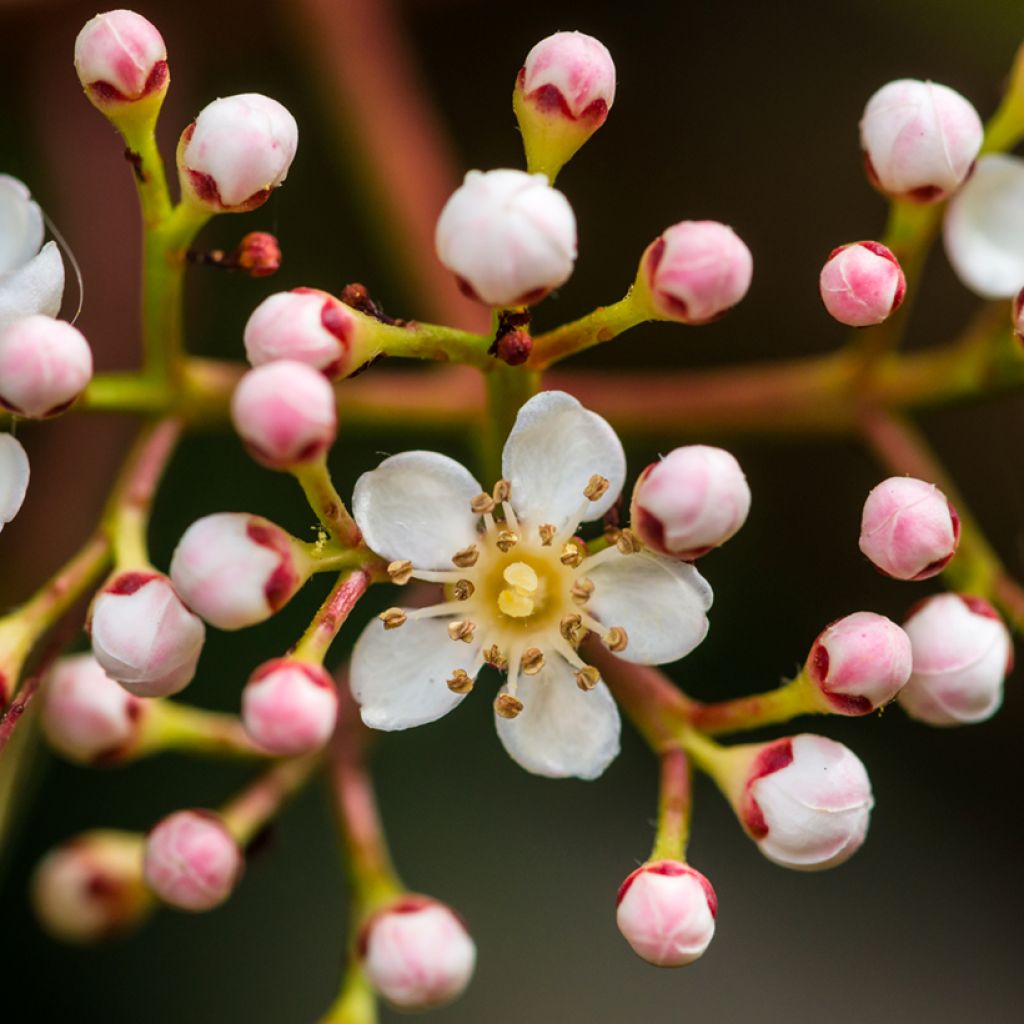

Photinia fraseri Nana - Christmas Berry
Photinia fraseri Nana - Christmas Berry
Photinia x fraseri Nana
Christmas Berry, Redtip Photinia
Healthy young plant. Product as described.
Valerie, 17/04/2023
This item cannot be shipped to the selected country
Delivery charge from €5.90
More information
Schedule delivery date,
and select date in basket
This plant carries a 24 months recovery warranty
More information
We guarantee the quality of our plants for a full growing cycle, and will replace at our expense any plant that fails to recover under normal climatic and planting conditions.
From €5.90 for pickup delivery and €6.90 for home delivery
Express home delivery from €8.90.
Does this plant fit my garden?
Set up your Plantfit profile →
Description
Photinia 'Nana' is a dwarf form of the famous Photinia 'Red Robin', used in hedges. Tolerating repeated pruning well, compact, slower growing than 'Red Robin', and easy to grow, it is appreciated for its young leaves beautifully coloured red in spring, which contrast pleasantly with the mature leaves of a shiny dark green.
Photinia 'Nana' combines qualities, both ornamental and cultural. First of all, it is one of the few evergreen bushes offering young foliage strongly coloured red. Then, its good tolerance to repeated pruning, which promotes the appearance of bright red shoots, as well as the density of its vegetation, perfect for quickly forming a low, colourful hedge throughout the year. But when left unpruned, 'Nana' truly shines: dressed in red and green in spring and autumn if you prune after flowering, it provides a fragrant spring flowering, with frothy umbels of cream-white-pink, very pleasant. So many reasons to plant it in an informal, evergreen or mixed hedge, associated with other equally easy-to-grow shrubs!
The Fraser Photinia is an old horticultural creation born in 1940 in the United States. It is the result of cross-breeding between Photinia glabra, native to Japan, and Photinia serrulata, native to China. This hybrid has given rise to some famous cultivars, including the New Zealand 'Red Robin', widely planted in our parks and gardens and on highway embankments.
Reaching an average height of 1 to 2m (3 to 7ft) with a spread of 1 to 1.5m, Photinia 'Nana' has a compact habit and shows moderate growth. Its well-branched vegetation is adorned with evergreen foliage all year round, consisting of tough and glossy leaves. Arranged alternately on the branches, they are about 6-8cm (2-3in) long and 4cm (2in) wide, finely toothed at the edges. Their colour changes from bright red to bright green and dark green in summer. In May-June, clusters of small, somewhat uncertain white flowers appear, reaching 15cm (6in) in diameter, mostly at the ends of the branches. Rich in nectar, they are highly visited by bees.
Report an error about the product description
Photinia fraseri Nana - Christmas Berry in pictures
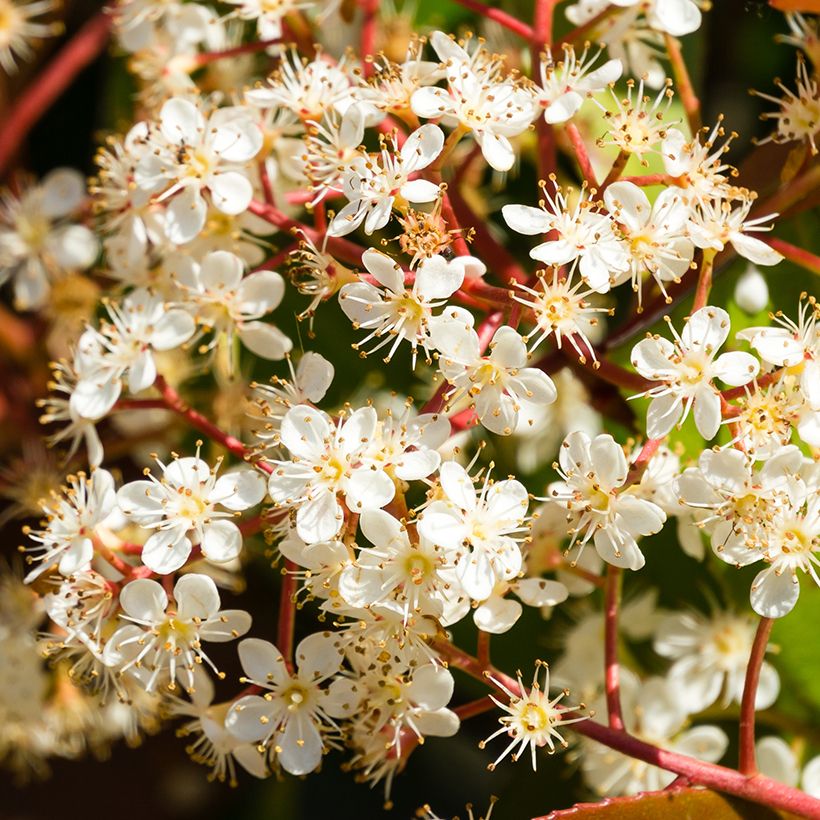

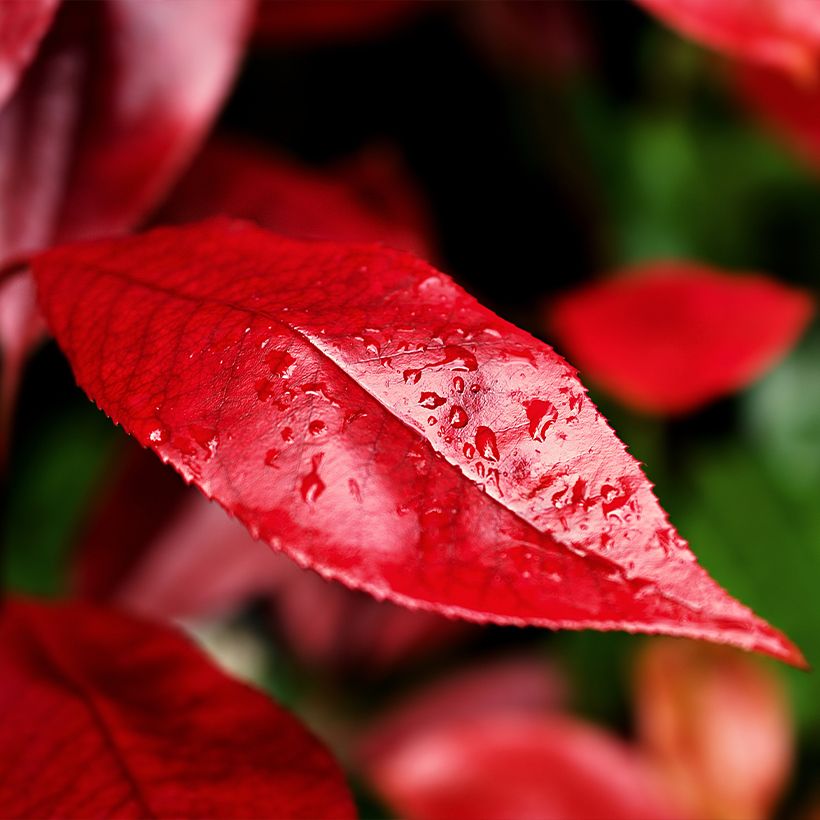

Plant habit
Flowering
Foliage
Botanical data
Photinia
x fraseri
Nana
Rosaceae
Christmas Berry, Redtip Photinia
Cultivar or hybrid
Other Photinias
Planting and care
Photinia x fraseri 'Nana' is planted in spring or autumn in any deep, moist to occasionally dry in summer, fertile and well-drained soil. It appreciates a sunny or semi-shaded exposure, sheltered from cold and brisk winds. It also tolerates shady exposures, although at the expense of flowering and the intensity of the colouration of young foliage. Adding compost is necessary for planting. Water well for the first two years, once or twice a week, especially in hot and dry weather during summer. Mulch the soil to keep it cool in summer in warm regions and protect the base in winter in cold regions. Note that once well established, Photinia x fraseri tolerates summer drought, even in the South where it is often planted. Prune in summer to balance the habit, cutting back half of all branches. This will promote the regrowth of young red leaves in autumn and will not compromise spring flowering. Note that climates with less contrasted, humid, and cool seasons promote the growth of photinias and the renewal of young red shoots, which can then be produced throughout the year.
Photinia is generally a robust plant with few enemies. However, in humid weather or, on the contrary, in certain dry and poor soils, Photinias can be affected by a fungus (entomosporiosis), powdery mildew. Watch out for leaves, if red or black spots appear, treat with Bordeaux mixture. The species can transmit bacterial fire to other more sensitive Rosaceae. Vine weevils can also nibble on the edge of leaves at night, while their larvae can attack the roots: treat the soil with nematodes that parasitize the larvae.
Planting period
Intended location
Care
-
, onOrder confirmed
Reply from on Promesse de fleurs
Foolproof Shrubs
Haven't found what you were looking for?
Hardiness is the lowest winter temperature a plant can endure without suffering serious damage or even dying. However, hardiness is affected by location (a sheltered area, such as a patio), protection (winter cover) and soil type (hardiness is improved by well-drained soil).

Photo Sharing Terms & Conditions
In order to encourage gardeners to interact and share their experiences, Promesse de fleurs offers various media enabling content to be uploaded onto its Site - in particular via the ‘Photo sharing’ module.
The User agrees to refrain from:
- Posting any content that is illegal, prejudicial, insulting, racist, inciteful to hatred, revisionist, contrary to public decency, that infringes on privacy or on the privacy rights of third parties, in particular the publicity rights of persons and goods, intellectual property rights, or the right to privacy.
- Submitting content on behalf of a third party;
- Impersonate the identity of a third party and/or publish any personal information about a third party;
In general, the User undertakes to refrain from any unethical behaviour.
All Content (in particular text, comments, files, images, photos, videos, creative works, etc.), which may be subject to property or intellectual property rights, image or other private rights, shall remain the property of the User, subject to the limited rights granted by the terms of the licence granted by Promesse de fleurs as stated below. Users are at liberty to publish or not to publish such Content on the Site, notably via the ‘Photo Sharing’ facility, and accept that this Content shall be made public and freely accessible, notably on the Internet.
Users further acknowledge, undertake to have ,and guarantee that they hold all necessary rights and permissions to publish such material on the Site, in particular with regard to the legislation in force pertaining to any privacy, property, intellectual property, image, or contractual rights, or rights of any other nature. By publishing such Content on the Site, Users acknowledge accepting full liability as publishers of the Content within the meaning of the law, and grant Promesse de fleurs, free of charge, an inclusive, worldwide licence for the said Content for the entire duration of its publication, including all reproduction, representation, up/downloading, displaying, performing, transmission, and storage rights.
Users also grant permission for their name to be linked to the Content and accept that this link may not always be made available.
By engaging in posting material, Users consent to their Content becoming automatically accessible on the Internet, in particular on other sites and/or blogs and/or web pages of the Promesse de fleurs site, including in particular social pages and the Promesse de fleurs catalogue.
Users may secure the removal of entrusted content free of charge by issuing a simple request via our contact form.
The flowering period indicated on our website applies to countries and regions located in USDA zone 8 (France, the United Kingdom, Ireland, the Netherlands, etc.)
It will vary according to where you live:
- In zones 9 to 10 (Italy, Spain, Greece, etc.), flowering will occur about 2 to 4 weeks earlier.
- In zones 6 to 7 (Germany, Poland, Slovenia, and lower mountainous regions), flowering will be delayed by 2 to 3 weeks.
- In zone 5 (Central Europe, Scandinavia), blooming will be delayed by 3 to 5 weeks.
In temperate climates, pruning of spring-flowering shrubs (forsythia, spireas, etc.) should be done just after flowering.
Pruning of summer-flowering shrubs (Indian Lilac, Perovskia, etc.) can be done in winter or spring.
In cold regions as well as with frost-sensitive plants, avoid pruning too early when severe frosts may still occur.
The planting period indicated on our website applies to countries and regions located in USDA zone 8 (France, United Kingdom, Ireland, Netherlands).
It will vary according to where you live:
- In Mediterranean zones (Marseille, Madrid, Milan, etc.), autumn and winter are the best planting periods.
- In continental zones (Strasbourg, Munich, Vienna, etc.), delay planting by 2 to 3 weeks in spring and bring it forward by 2 to 4 weeks in autumn.
- In mountainous regions (the Alps, Pyrenees, Carpathians, etc.), it is best to plant in late spring (May-June) or late summer (August-September).
The harvesting period indicated on our website applies to countries and regions in USDA zone 8 (France, England, Ireland, the Netherlands).
In colder areas (Scandinavia, Poland, Austria...) fruit and vegetable harvests are likely to be delayed by 3-4 weeks.
In warmer areas (Italy, Spain, Greece, etc.), harvesting will probably take place earlier, depending on weather conditions.
The sowing periods indicated on our website apply to countries and regions within USDA Zone 8 (France, UK, Ireland, Netherlands).
In colder areas (Scandinavia, Poland, Austria...), delay any outdoor sowing by 3-4 weeks, or sow under glass.
In warmer climes (Italy, Spain, Greece, etc.), bring outdoor sowing forward by a few weeks.

































